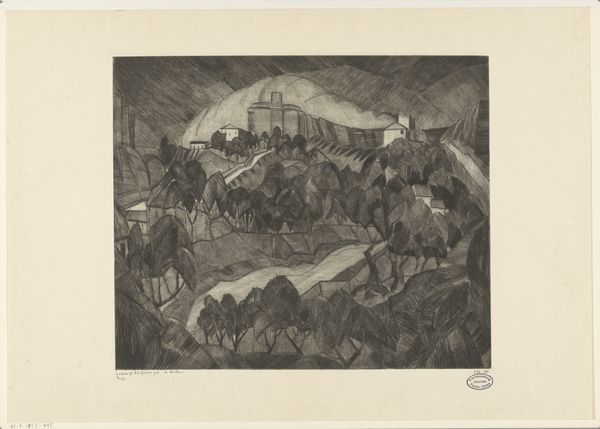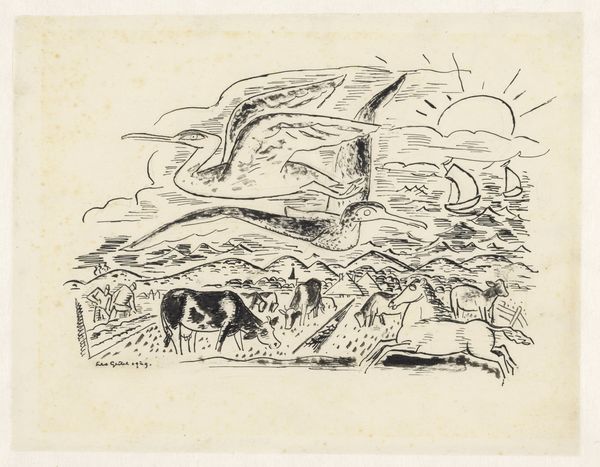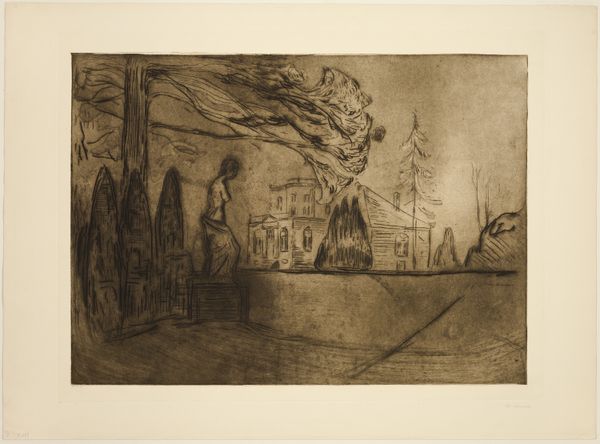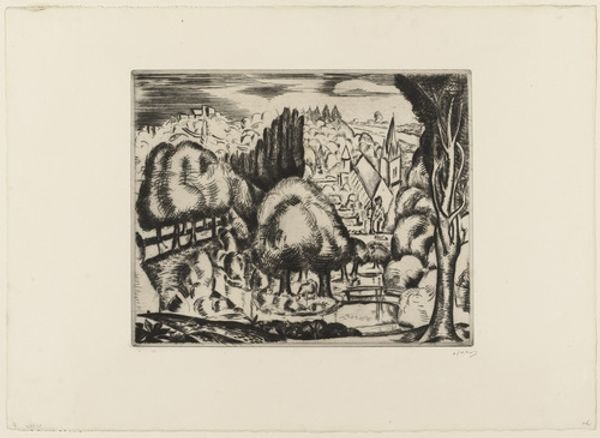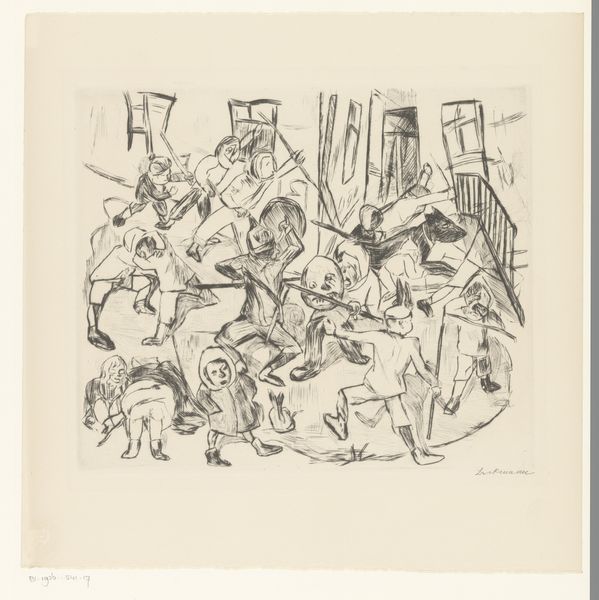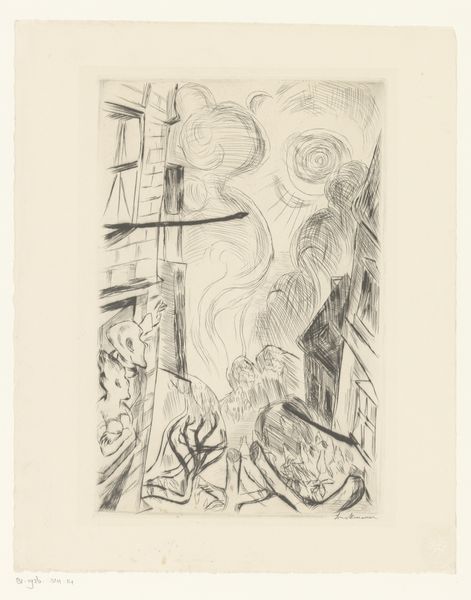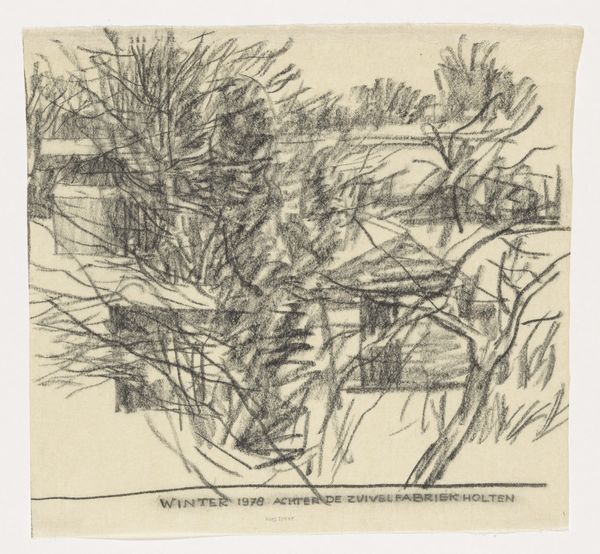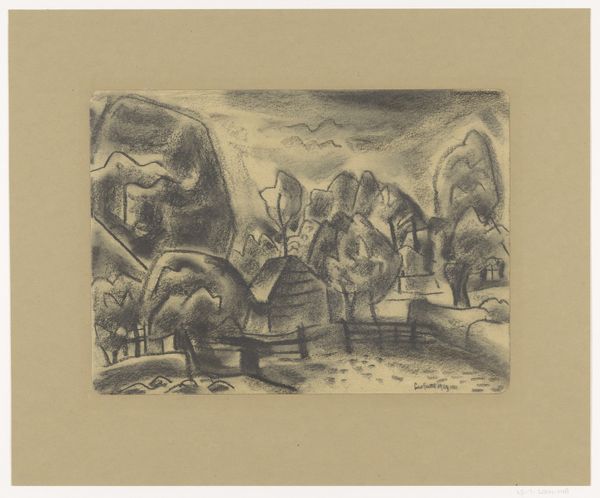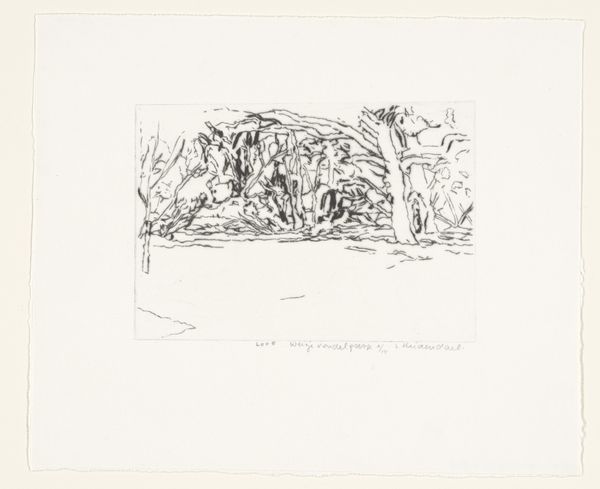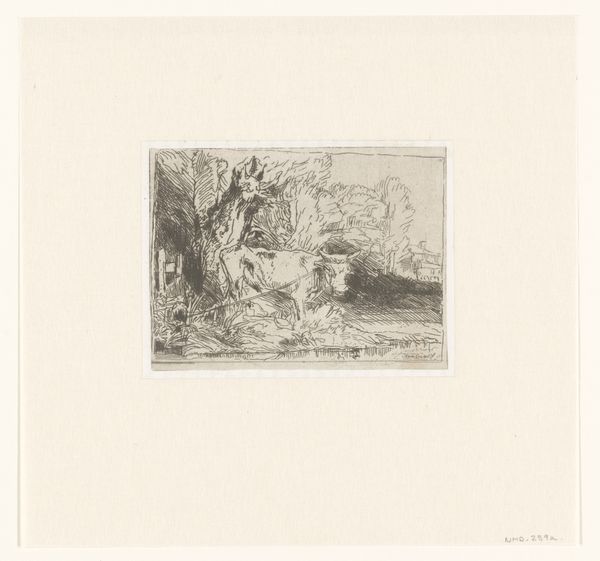
drawing, etching, ink
#
drawing
#
ink drawing
#
pen drawing
#
etching
#
landscape
#
ink
#
expressionism
#
line
#
cityscape
#
street
Dimensions: height 233 mm, width 295 mm
Copyright: Rijks Museum: Open Domain
Editor: This is Max Beckmann's "Landscape with Air Balloon," created between 1918 and 1919. It’s an etching, full of really striking, bold lines. It feels unsettling to me, with this sort of dreamlike distortion. What symbolic elements jump out at you? Curator: The balloon, of course, hovers like an impossible thought or unrealized potential. Think about the historical context; this was right after the First World War. Air balloons would have evoked feelings about warfare and a new technological age. What’s the emotional register of the image, though? Editor: Anxiety, definitely! Everything feels kind of sharp and unbalanced. Even the trees look menacing. Is that a common thread in Expressionist landscapes? Curator: Very much so. But notice *how* the anxiety is rendered. It’s not just in the subject, but in the *style* – the harsh lines, the compressed space. It creates a claustrophobic feel, like the city itself is a cage. Even the single figure walking down the road seems burdened by it. What could the figure represent? Editor: Maybe a solitary survivor, processing all the trauma? The balloon and figure contrast one another. The figure being anchored on land, weighed down by what has passed; while the balloon floats weightlessly, unbound. Curator: Precisely! And don’t overlook the cityscape; its very structure – buildings and roads - embodies the weight of cultural memory, both promising and potentially oppressive. So, while seemingly simple, Beckmann uses everyday imagery to reveal profound psychological states and the lingering impact of war. Editor: I hadn’t considered the oppressive aspects of the city structure itself before! Thanks, this makes me consider cultural themes with an eye to historical influences.
Comments
No comments
Be the first to comment and join the conversation on the ultimate creative platform.
